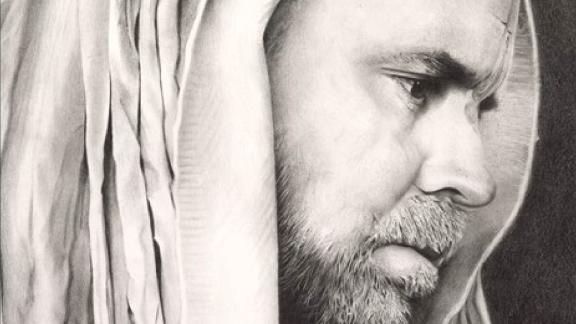
Sripad Aindra Prabhu was a revolutionary! A white American who changed the face of Kirtan for hundreds and thousands by living in India, specifically Vrindavan for the last 24 years of his life.
The specialty about kirtans in Vrindavan is becoming the epic centre of talent and this was all the inspiration of Aindra Das. He made Kirtan very joyous, attractive and pure.
I knew Aindra reasonably well but by taking the privilege to write his biography. I learned amazing things about him. I humbly urge you all to read this book thoroughly and take up to the chanting the holy name and attend the 24hours kirtans and get first-hand experience and encourage others to do the same. It will be very pleasing to Srila Prabhupada. ~ by Kalachandji Dasa
Some Interesting facts:
- He grew up in a religious family and was a musician.
- He took initiation from His Divine Grace A.C. Bhaktivedanta Swami Prabhupada at a very young age.
- He was able to renounce worldly things instantly & embarrassed Vedic culture spontaneously.
- He was fearless & dedicated to carry out the instructions of his Guru, just as much as Prabhupada had taken the mammoth task to bring the Vedic message to the whole world as instructed by his Guru Bhaktisiddhanta Saraswati Maharaj.
- Just see the power of Vedic culture it brought an American young boy to India and this boy over next 40 years rocked the whole world with most precious gift : “Harinam Sankirtan.
- He was a self realised Saint- which is a very rare achievement. Even the Saints of Vrindavan respected Him as one of them.
One day...
When the curtains opened one morning in the winter of 1989, Aindra was amazed by what he saw. Srimati Radharani’s eyes were newly painted. And they were incredible, more beautiful than ever. “Who painted them?” he asked Radha-Shyamasundar’s pujari Bhaktisiddhanta das.
“One of the brahmacharis,” Bhaktisiddhanta had replied.
Aindra knew something was off. No pujari, no artist he’d ever known, would have been able to paint Radharani’s eyes with such bhava or spiritual expertise. “No way,” he challenged. “Who painted them?”
Bhaktisiddhanta held fast; he wouldn’t identify the source of the transformation. But when Aindra kept asking, Bhaktisiddhanta finally revealed the secret: the renowned South African devotee artist, Arca-vigraha dasi, who had come to India to find themes for her work but was then diagnosed with cancer and remained to spend her final days in Vrindavan, had noticed that the temple Deities were in need of repainting and done the work.
But there had been an obstacle: as was standard, even in ISKCON temples, in India, women were not allowed on the altar. But Bhaktisiddhanta, who had created the bronze bas-relief panels in Srila Prabhupada’s samadhi mandir and was himself an accomplished artist—classically trained in Europe and America and a successful commercial artist in New York—had felt that the Deities deserved Arca-vigraha’s talents and come up with a plan.
“I’ll arrange for you to do this service,” he had told her, “but you have to do it in complete secrecy.” Indians especially, but also other pujaris and many devotees would have disapproved of a woman doing the service. “I’ll leave the key to the Deity room on the ledge above the door. Don’t use it any earlier than 10 p.m. By that time, everyone except the boys on night shift for the 24-hour kirtan should be asleep.”
“How will I get in without them noticing?” she had asked. “They sit so near the door.”
“I don’t know,” he’d said. “That’s a challenge.”
A little after ten, Arca-vigraha had been hovering around the door to the altar, waiting for an opportunity, when Aindra had suddenly appeared beside her. “Do you need something, mataji?” he had asked.
“No, no . . . thank you,” she’d replied, and left out the temple’s side door.
A little while later, the electricity had gone out (it frequently did), and under the cover of darkness Arca-vigraha had slipped back into the temple and onto the altar, where she had spent the night painting the Deities’ faces, hands, and feet, then sneaking out before the pujaris came to prepare for mangala-arati.
The drama had resumed each night for two weeks. On the final night, Arca-vigraha had painted Srimati Radharani’s eyes.
“Where is she?” Aindra demanded.
“Prabhu, calm down . . .”
“Where is she?” he persisted. “If you don’t tell me, I’ll find out from someone else.” And, learning that Arca-vigraha was staying in the guesthouse, he rushed over.
When Aindra knocked on Arca-vigraha’s door, he heard a faint “Come in” and entered.
Arca-vigraha was lying in bed, visibly weak and ill.
Aindra went straight to her feet and touched them with respect. “How did you do it?” he asked.
“Do what?” she replied.
“How did you paint Radharani’s eyes like that?”
“I don’t know,” she said. “I just painted what I was inspired to paint.”
“How do you know what Radharani’s eyes look like?”
“I don’t know what they look like. I just painted them by inspiration.”
“You painted them exactly as I envision them every day in my own meditations!”
Your Servent
Kalachandji Das